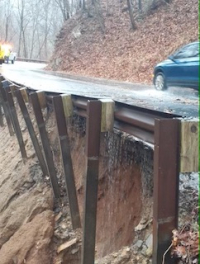Stratford-on-Avon: in search of ‘The Bard’
 It is mid-June in England, and the skies are a brilliant blue. Sunshine spills on the street and the clipped green lawns of homes and parks. A breeze stirs the leaves of the trees, and when you are in the sun you are very warm but with the breeze the shade of the trees is cool and refreshing. Flowers flourish in window boxes and tiny gardens, and around some of the homes are enormous tangles of wisteria with roots as thick as a man’s calf.
It is mid-June in England, and the skies are a brilliant blue. Sunshine spills on the street and the clipped green lawns of homes and parks. A breeze stirs the leaves of the trees, and when you are in the sun you are very warm but with the breeze the shade of the trees is cool and refreshing. Flowers flourish in window boxes and tiny gardens, and around some of the homes are enormous tangles of wisteria with roots as thick as a man’s calf.
It is mid-June and the perfect day for touring Stratford-on-Avon, the birthplace and resting ground of the greatest writer who ever lived.
My first stop along these ancient streets was Will Shakespeare’s grammar school, located in the town’s old guildhall. Here he was taught the rudiments of reading, writing, and rhetoric. In Shakespeare, Anthony Burgess writes that “the schoolday began at seven in winter and six in summer. After praying to be made good and holy boys, full of Latin, the pupils got down to work till nine, when they were allowed breakfast. More work to eleven, and then a blessed two-hour gap for the main meal of the day. Back to school at one, salt meat and sour ale and dark bread grumbling within, and hard slog till five.” Peeking into the windows of the old hall conjured up images of William Shakespeare coming back into the building from lunch on just such a day.
Next came a short hike to Holy Trinity Church, where Shakespeare lies buried within the floor of the chancel. He died on April 25, 1616. Though some have urged that his body be moved to Poet’s Corner in London’s Westminster Abbey, Shakespeare remains here in this parish church, the most visited parish church in all of Britain. Perhaps the epitaph written on the stone slab above his grave deterred those wishing to dig him up:
GOOD FRIEND FOR JESUS SAKE
FOREBEAR,
Related Items
TO DIGG THE DVST ENCLOSED HERE.
BLESTE BE YE MAN YT SPARES THESE STONES,
AND CURSED BE HE YT MOVES MY BONES
Displayed near the chancel of the church are various panels explaining Shakespeare’s life of faith. Whoever composed these paragraphs should receive a medal for combining facts about English life in Tudor times while embedding wonderful points of Christianity within the text. Also impressive was the large Bible in the prayer chapel, which lay open to John 3:16, reminding the visitor of the way to eternal life.
Outside again, where the dead sleep in their graves about the church, my friends and I head for Shakespeare’s birthplace. Just next to Holy Trinity is a small green park with a large cross and panels bearing the more than three hundred names of the men from Stratford who fell in the First World War. At the foot of monument are the artificial poppies we’ve seen at all such memorials, reminders once again of the terrible cost the English paid in that war.
At the birthplace, an exhibit explains Shakespeare’s life and his connections to Stratford. Quotations from his work are displayed on the walls and on electronic screens. The house itself contains one room containing a bed expensive for its day; the family left the bed on the first floor as a sign of their relative wealth. Upstairs are the bedrooms: one for the parents, one each for the girls and boys. The exterior of the house is typical wattle and daub, as so often seen in photographs of Stratford.
The gift store demanded some browsing time. Here was everything Shakespearian: coffee mugs, refrigerator magnets, shopping bags, DVDs, figurines, and of course books, various editions of all the plays plus biographies along with shelves of books about the Tudor era. Though I bought two books here — Anthony Burgess’s Shakespeare and Dominic Dromgoole’s Will & Me: How Shakespeare Took Over My Life — my favorite moment in the shop came with the sign over one of the low doors: “Please Mind Your Heads.” Yes, I thought: if only we could all mind our heads, how much brighter the world might be.
We ended our tour of Stratford with a long sit beside the River Avon. The placid water swarmed with ducks, and swans, rowing teams, canoes, rowboats, and houseboats, and the grassy banks offered relief from the long hikes of the day.
An endnote: there is, of course, a monument to Shakespeare in Poet’s Corner in Westminster Abbey. There he stands, holding court with so many other great men of letters. There were plaques to two of my favorite British poets — W.H. Auden and Dylan Thomas, but my favorite memorial was the bust of another favorite poet, William Blake, for the artist had captured the wildness of that man in his tousled hair and wild features. Surprisingly, there was a bust of the American Henry Wadsworth Longfellow, erected long ago by some of his London admirers. Beneath the floor of the abbey rest the bones of writers like Dryden and Chaucer.
Here and in Stratford, I, like millions of others over the years, paid homage to the writers I have known and loved.
LAST WEEK: The literary signposts will point the way









